TO
| Creator | Title | Description | Subject | Date | ||
|---|---|---|---|---|---|---|
| 1 |
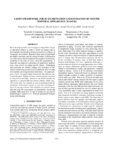 | Gerig, Guido | A joint framework for 4D segmentation and estimation of smooth temporal appearance changes | Medical imaging studies increasingly use longitudinal images of individual subjects in order to follow-up changes due to development, degeneration, disease progression or efficacy of therapeutic intervention. Repeated image data of individuals are highly correlated, and the strong causality of infor... | 2014-01-01 | |
| 2 |
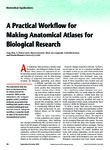 | Hansen, Charles D. | A practical workflow for making anatomical atlases for biological research | An anatomical atlas provides a detailed map for medical and biological studies of anatomy. These atlases are important for understanding normal anatomy and the development and function of structures, and for determining the etiology of congenital abnormalities. Unfortunately, for biologists, generat... | 2012-01-01 | |
| 3 |
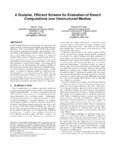 | Kirby, Robert Michael | A scalable, efficient scheme for evaluation of stencil computations over unstructured meshes | Stencil computations are a common class of operations that appear in many computational scientific and engineering applications. Stencil computations often benefit from compile-time analysis, exploiting data-locality, and parallelism. Post-processing of discontinuous Galerkin (dG) simulation solutio... | 2013-01-01 | |
| 4 |
 | Berzins, Martin | A survey of high level frameworks in block-structured adaptive mesh refinement packages | Over the last decade block-structured adaptive mesh refinement (SAMR) has found increasing use in large, publicly available codes and frameworks. SAMR frameworks have evolved along different paths. Some have stayed focused on specific domain areas, others have pursued a more general functionality, p... | 2014-01-01 | |
| 5 |
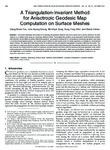 | Cohen, Elaine | A triangulation-invariant method for anisotropic geodesic map computation on surface meshes | This paper addresses the problem of computing the geodesic distance map from a given set of source vertices to all other vertices on a surface mesh using an anisotropic distance metric. Formulating this problem as an equivalent control theoretic problem with Hamilton-Jacobi-Bellman partial different... | 2012-01-01 | |
| 6 |
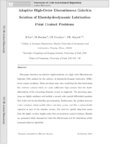 | Berzins, Martin | Adaptive high-order discontinuous galerkin solution of elastohydrodynamic lubrication point contact problems | This paper describes an adaptive implementation of a high order Discontinuous Galerkin (DG) method for the solution of elastohydrodynamic lubrication (EHL) point contact problems. These problems arise when modelling the thin lubricating film between contacts which are under sufficiently high pressur... | 2012-01-01 | |
| 7 |
 | Henderson, Thomas C. | Analysis of topographic maps for recreational purposes using decision trees | In this paper we describe a method for predicting the subjective quality of a new mountain bike route for a particular subject based on routes previously ridden and ranked by the subject. GPS tracks of the previously ridden routes are over laid on rasterized topographic maps and topographic features... | 2013-01-01 | |
| 8 |
 | Bargteil, Adam Wade | Animation of deformable bodies with quadratic bézier finite elements | In this article, we investigate the use of quadratic finite elements for graphical animation of deformable bodies.We consider both integrating quadratic elements with conventional linear elements to achieve a computationally efficient adaptive-degree simulation framework as well as wholly quadratic ... | 2014-01-01 | |
| 9 |
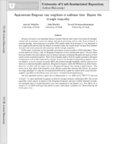 | Venkatasubramanian, Suresh | Approximate Bregman near neighbors in sublinear time: beyond the triangle inequality | Bregman divergences are important distance measures that are used extensively in data-driven applications such as computer vision, text mining, and speech processing, and are a key focus of interest in machine learning. Answering nearest neighbor (NN) queries under these measures is very important i... | 2012-01-01 | |
| 10 |
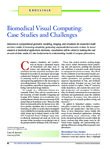 | Johnson, Christopher R. | Biomedical visual computing: case studies and challenges | Advances in computational geometric modeling, imaging, and simulation let researchers build and test models of increasing complexity, generating unprecedented amounts of data. As recent research in biomedical applications illustrates, visualization will be critical in making this vast amount of data... | 2012-01-01 | |
| 11 |
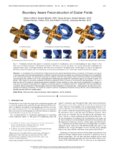 | Hansen, Charles D. | Boundary aware reconstruction of scalar fields | In visualization, the combined role of data reconstruction and its classification plays a crucial role. In this paper we propose a novel approach that improves classification of different materials and their boundaries by combining information from the classifiers at the reconstruction stage. Our ap... | 2014-01-01 | |
| 12 |
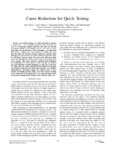 | Regehr, John | Cause reduction for quick testing | Abstract-In random testing, it is often desirable to produce a "quick test" - an extremely inexpensive test suite that can serve as a frequently applied regression and allow the benefits of random testing to be obtained even in very slow or oversubscribed test environments. Delta debugging is an alg... | 2014-01-01 | |
| 13 |
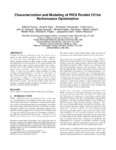 | Pascucci, Valerio | Characterization and modeling of PIDX parallel I/O for performance optimization | Parallel I/O library performance can vary greatly in re- sponse to user-tunable parameter values such as aggregator count, file count, and aggregation strategy. Unfortunately, manual selection of these values is time consuming and dependent on characteristics of the target machine, the underlying fi... | 2013-01-01 | |
| 14 |
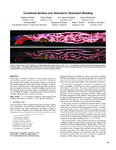 | Hansen, Charles D. | Combined surface and volumetric occlusion shading | In this paper, a method for interactive direct volume rendering is proposed that computes ambient occlusion effects for visualizations that combine both volumetric and geometric primitives, specifically tube shaped geometric objects representing streamlines, magnetic field lines or DTI fiber tracts.... | 2012-01-01 | |
| 15 |
 | Pascucci, Valerio | Combining in-situ and in-transit processing to enable extreme-scale scientific analysis | With the onset of extreme-scale computing, I/O constraints make it increasingly difficult for scientists to save a sufficient amount of raw simulation data to persistent storage. One potential solution is to change the data analysis pipeline from a post-process centric to a concurrent approach based... | 2012-01-01 | |
| 16 |
 | Pascucci, Valerio | Computing morse-smale complexes with accurate geometry | Topological techniques have proven highly successful in analyzing and visualizing scientific data. As a result, significant efforts have been made to compute structures like the Morse-Smale complex as robustly and efficiently as possible. However, the resulting algorithms, while topologically consis... | 2012-01-01 | |
| 17 |
 | Pascucci, Valerio | Conforming Morse-Smale complexes | Morse-Smale (MS) complexes have been gaining popularity as a tool for feature-driven data analysis and visualization. However, the quality of their geometric embedding and the sole dependence on the input scalar field data can limit their applicability when expressing application-dependent features.... | 2014-01-01 | |
| 18 |
 | Whitaker, Ross T. | Curve boxplot: Generalization of boxplot for ensembles of curves | In simulation science, computational scientists often study the behavior of their simulations by repeated solutions with variations in parameters and/or boundary values or initial conditions. Through such simulation ensembles, one can try to understand or quantify the variability or uncertainty in a... | 2014-01-01 | |
| 19 |
 | Berzins, Martin | DAG-based software frameworks for PDEs | The task-based approach to software and parallelism is well-known and has been proposed as a potential candidate, named the silver model, for exas-cale software. This approach is not yet widely used in the large-scale multi-core parallel computing of complex systems of partial differential equations... | 2012-01-01 | |
| 20 |
 | Berzins, Martin | Data and range-bounded polynomials in ENO methods | Essentially Non-Oscillatory (ENO) methods and Weighted Essentially Non- Oscillatory (WENO) methods are of fundamental importance in the numerical solution of hyperbolic equations. A key property of such equations is that the solution must remain positive or lie between bounds. A modification of the ... | 2012-01-01 | |
| 21 |
 | Bargteil, Adam Wade | Deformation embedding for point-based elastoplastic simulation | We present a straightforward, easy-to-implement, point-based approach for animating elastoplastic materials. The core idea of our approach is the introduction of embedded space-the least-squares best fit of the material's rest state into three dimensions. Nearest neighbor queries in the embedded spa... | 2014-01-01 | |
| 22 |
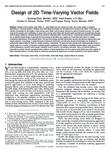 | Hansen, Charles D. | Design of 2D time-varying vector fields | Design of time-varying vector fields, i.e., vector fields that can change over time, has a wide variety of important applications in computer graphics. Existing vector field design techniques do not address time-varying vector fields. In this paper, we present a framework for the design of time-vary... | 2012-01-01 | |
| 23 |
 | Kasera, Sneha K. | Detecting receiver attacks in VRTI-based device free localization | Variance-based Radio Tomographic Imaging (VRTI) is an emerging technology that locates moving objects in areas surrounded by simple and inexpensive wireless sensor nodes. VRTI uses human motion induced variation in RSS and spatial correlation between link variations to locate and track people. An ar... | 2012-01-01 | |
| 24 |
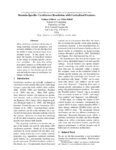 | Riloff, Ellen M. | Domain-specific coreference resolution with lexicalized features | Most coreference resolvers rely heavily on string matching, syntactic properties, and semantic attributes of words, but they lack the ability to make decisions based on individual words. In this paper, we explore the benefits of lexicalized features in the setting of domain-specific coreference reso... | 2014-01-01 | |
| 25 |
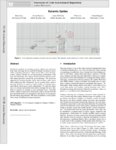 | Bargteil, Adam Wade | Dynamic sprites | Traditional methods for creating dynamic objects and characters from static drawings involve careful tweaking of animation curves and/or simulation parameters. Sprite sheets offer a more drawing-centric solution, but they do not encode timing information or the logic that determines how objects shou... | 2014-01-01 |
